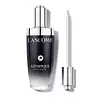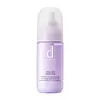What's inside
What's inside
 Key Ingredients
Key Ingredients

 Benefits
Benefits

 Concerns
Concerns

No concerns
 Ingredients Side-by-side
Ingredients Side-by-side

Water
Skin ConditioningBifida Ferment Lysate
Skin ConditioningGlycerin
HumectantPentylene Glycol
Skin ConditioningPolymnia Sonchifolia Root Juice
Skin ConditioningDimethicone
EmollientAlpha-Glucan Oligosaccharide
CleansingSodium Carboxymethyl Beta-Glucan
CleansingSodium Hyaluronate
HumectantSalicyloyl Phytosphingosine
Skin ConditioningAdenosine
Skin ConditioningMannose
HumectantAmmonium Polyacryloyldimethyl Taurate
Emulsion StabilisingDipotassium Glycyrrhizate
HumectantHydroxyacetophenone
AntioxidantCaprylyl Glycol
EmollientTetrasodium Glutamate Diacetate
Citric Acid
BufferingLactic Acid
BufferingLactobacillus
Skin ConditioningAcetic Acid
BufferingMaltodextrin
AbsorbentXanthan Gum
EmulsifyingFaex Extract
Skin ConditioningOctyldodecanol
EmollientButylene Glycol
HumectantSodium Benzoate
MaskingParfum
MaskingWater, Bifida Ferment Lysate, Glycerin, Pentylene Glycol, Polymnia Sonchifolia Root Juice, Dimethicone, Alpha-Glucan Oligosaccharide, Sodium Carboxymethyl Beta-Glucan, Sodium Hyaluronate, Salicyloyl Phytosphingosine, Adenosine, Mannose, Ammonium Polyacryloyldimethyl Taurate, Dipotassium Glycyrrhizate, Hydroxyacetophenone, Caprylyl Glycol, Tetrasodium Glutamate Diacetate, Citric Acid, Lactic Acid, Lactobacillus, Acetic Acid, Maltodextrin, Xanthan Gum, Faex Extract, Octyldodecanol, Butylene Glycol, Sodium Benzoate, Parfum
Water
Skin ConditioningGlycerin
HumectantDipropylene Glycol
HumectantButylene Glycol
HumectantHydrogenated Polydecene
EmollientHydrogenated Palm Oil
EmollientPEG-60 Glyceryl Isostearate
Dimethicone
EmollientPEG-150
HumectantPentaerythrityl Tetraethylhexanoate
EmollientTranexamic Acid
AstringentErythritol
HumectantTrehalose
HumectantXylitol
HumectantPEG/PPG-17/4 Dimethyl Ether
Skin ConditioningPetrolatum
EmollientElaeis Guineensis Kernel Oil
EmollientPEG-5 Glyceryl Stearate
EmulsifyingMaltitol
HumectantBehenyl Alcohol
EmollientElaeis Guineensis Oil
EmollientPhenoxyethanol
PreservativePhytosteryl/Octyldodecyl Lauroyl Glutamate
Skin ConditioningBatyl Alcohol
EmollientCarbomer
Emulsion StabilisingDipotassium Glycyrrhizate
HumectantPotassium Hydroxide
BufferingSodium Metaphosphate
BufferingDimethylacrylamide/Sodium Acryloyldimethyltaurate Crosspolymer
Sodium Metabisulfite
AntioxidantSaccharomyces Ferment Lysate Filtrate
Skin ConditioningPEG/PPG-14/7 Dimethyl Ether
Skin ConditioningOnonis Spinosa Root Extract
AntiseborrhoeicAverrhoa Carambola Leaf Extract
HumectantTocopherol
AntioxidantCitric Acid
BufferingRosa Roxburghii Fruit Extract
TonicCrataegus Monogyna Flower Extract
Skin ConditioningPrunus Yedoensis Leaf Extract
Skin ConditioningWater, Glycerin, Dipropylene Glycol, Butylene Glycol, Hydrogenated Polydecene, Hydrogenated Palm Oil, PEG-60 Glyceryl Isostearate, Dimethicone, PEG-150, Pentaerythrityl Tetraethylhexanoate, Tranexamic Acid, Erythritol, Trehalose, Xylitol, PEG/PPG-17/4 Dimethyl Ether, Petrolatum, Elaeis Guineensis Kernel Oil, PEG-5 Glyceryl Stearate, Maltitol, Behenyl Alcohol, Elaeis Guineensis Oil, Phenoxyethanol, Phytosteryl/Octyldodecyl Lauroyl Glutamate, Batyl Alcohol, Carbomer, Dipotassium Glycyrrhizate, Potassium Hydroxide, Sodium Metaphosphate, Dimethylacrylamide/Sodium Acryloyldimethyltaurate Crosspolymer, Sodium Metabisulfite, Saccharomyces Ferment Lysate Filtrate, PEG/PPG-14/7 Dimethyl Ether, Ononis Spinosa Root Extract, Averrhoa Carambola Leaf Extract, Tocopherol, Citric Acid, Rosa Roxburghii Fruit Extract, Crataegus Monogyna Flower Extract, Prunus Yedoensis Leaf Extract
Ingredients Explained
These ingredients are found in both products.
Ingredients higher up in an ingredient list are typically present in a larger amount.
Butylene Glycol (or BG) is used within cosmetic products for a few different reasons:
Overall, Butylene Glycol is a safe and well-rounded ingredient that works well with other ingredients.
Though this ingredient works well with most skin types, some people with sensitive skin may experience a reaction such as allergic rashes, closed comedones, or itchiness.
Learn more about Butylene GlycolCitric Acid is an alpha hydroxy acid (AHA) naturally found in citrus fruits like oranges, lemons, and limes.
Like other AHAs, citric acid can exfoliate skin by breaking down the bonds that hold dead skin cells together. This helps reveal smoother and brighter skin underneath.
However, this exfoliating effect only happens at high concentrations (20%) which can be hard to find in cosmetic products.
Due to this, citric acid is usually included in small amounts as a pH adjuster. This helps keep products slightly more acidic and compatible with skin's natural pH.
In skincare formulas, citric acid can:
While it can provide some skin benefits, research shows lactic acid and glycolic acid are generally more effective and less irritating exfoliants.
Most citric acid used in skincare today is made by fermenting sugars (usually from molasses). This synthetic version is identical to the natural citrus form but easier to stabilize and use in formulations.
Read more about some other popular AHA's here:
Learn more about Citric AcidDimethicone is a type of synthetic silicone created from natural materials such as quartz.
What it does:
Dimethicone comes in different viscosities:
Depending on the viscosity, dimethicone has different properties.
Ingredients lists don't always show which type is used, so we recommend reaching out to the brand if you have questions about the viscosity.
This ingredient is unlikely to cause irritation because it does not get absorbed into skin. However, people with silicone allergies should be careful about using this ingredient.
Note: Dimethicone may contribute to pilling. This is because it is not oil or water soluble, so pilling may occur when layered with products. When mixed with heavy oils in a formula, the outcome is also quite greasy.
Learn more about DimethiconeDipotassium Glycyrrhizate comes from licorice root.
Extracts of licorice have demonstrated to have antibacterial, anti‐inflammatory, antiviral, antioxidant properties.
One component, glabridin, has extra potent antioxidant and soothing properties. It has also been found to block pigmentation from UVB rays in guinea pigs.
Licorice Root also contains a flavonoid. Flavonoids are a natural substance from in plants. Flavonoids also have antioxidant properties.
Another component, glycyrrhizin, has been found to have anti-inflammatory and antimicrobial benefits. This may make licorice root extract effective at treating acne. However, more research is needed to support this.
Liquiritin is one of the flavone compounds found in licorice. It has been found to help lighten skin by preventing tyrosinase from reacting with tyrosine. When the two react, protein is converted to melanin. Melanin is the substance in your body that gives your features pigmentation.
Licorice root is native to Southern Europe and Asia. It has been used in traditional Chinese medicine to help with respiratory issues.
Learn more about Dipotassium GlycyrrhizateGlycerin is already naturally found in your skin. It helps moisturize and protect your skin.
A study from 2016 found glycerin to be more effective as a humectant than AHAs and hyaluronic acid.
As a humectant, it helps the skin stay hydrated by pulling moisture to your skin. The low molecular weight of glycerin allows it to pull moisture into the deeper layers of your skin.
Hydrated skin improves your skin barrier; Your skin barrier helps protect against irritants and bacteria.
Glycerin has also been found to have antimicrobial and antiviral properties. Due to these properties, glycerin is often used in wound and burn treatments.
In cosmetics, glycerin is usually derived from plants such as soybean or palm. However, it can also be sourced from animals, such as tallow or animal fat.
This ingredient is organic, colorless, odorless, and non-toxic.
Glycerin is the name for this ingredient in American English. British English uses Glycerol/Glycerine.
Learn more about GlycerinWater. It's the most common cosmetic ingredient of all. You'll usually see it at the top of ingredient lists, meaning that it makes up the largest part of the product.
So why is it so popular? Water most often acts as a solvent - this means that it helps dissolve other ingredients into the formulation.
You'll also recognize water as that liquid we all need to stay alive. If you see this, drink a glass of water. Stay hydrated!
Learn more about Water